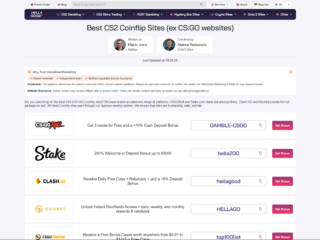
Every detail counts in boating, and battery weight is no exception. I’ve often wondered how the weight of my trolling motor battery affects my boat’s efficiency and performance. The right battery choice can significantly affect how smoothly I glide across the water.
 This guide delves into how battery weight affects trolling motor performance and overall boating efficiency. You’ll discover how to strike the right balance between power and weight for peak performance and get practical tips for choosing the ideal battery for your setup.
This guide delves into how battery weight affects trolling motor performance and overall boating efficiency. You’ll discover how to strike the right balance between power and weight for peak performance and get practical tips for choosing the ideal battery for your setup.
The Importance of Battery Weight in Trolling Motor Efficiency and Boat Performance
Battery weight plays a critical role in the efficiency of a trolling motor and overall boat performance. A lighter battery might offer increased agility, while a heavier option could provide substantial power. A lighter battery, such as a 36v lithium trolling motor battery, can significantly improve the power-to-weight ratio, enhancing speed and responsiveness. Proper weight distribution also contributes to better stability on the water, while reducing overall weight improves handling and maneuverability, allowing for sharper turns and quicker adjustments.
Optimizing battery weight is key to maximizing control, efficiency, and overall boating experience.
Understanding Battery Types and Their Weights
Different battery types impact weight and performance in various ways. Selecting the right one can significantly affect a trolling motor’s efficiency and overall boat handling.
Lead-Acid Batteries
Lead-acid batteries are commonly used, mostly because they are cheaper. However, they are heavier than other options, which might affect maneuverability. A typical group 24 lead-acid battery weighs around 55 to 60 pounds.
- They’re affordable but often offer less energy density.
- Charging takes longer, and they can be more maintenance-intensive.
Consider lead-acid only if budget constraints are, well, a priority.
AGM (Absorbent Glass Mat) Batteries
AGM batteries provide a good balance of weight and performance. Generally, they weigh less than traditional lead-acid batteries, around 40 to 50 pounds for a comparable size.
- They’re maintenance-free and can tolerate deeper discharges.
- AGM batteries often deliver better energy efficiency but come at a higher price point.
For those seeking reliability, AGM might serve as a smart choice.
Lithium-Ion Batteries
Lithium-ion batteries shine in terms of weight. A 36v lithium trolling motor battery can weigh as little as 30 pounds.
- They charge quickly and offer high energy density.
- Lifespan is much longer compared to lead-acid and AGM options.
These batteries handle vibrations well and provide consistent performance. Although the initial investment is higher, the long-term benefits may outweigh the cost.
Impact of Battery Weight on Trolling Motor Efficiency
Battery weight significantly impacts trolling motor efficiency. A thoughtful selection based on weight allows for better performance while fishing or leisurely boating.
Power-to-Weight Ratio
Power-to-weight ratio matters in driving efficiency. A light battery can contribute to a higher ratio, improving responsiveness. For instance, a 36v lithium battery weighs less than its lead-acid counterpart. This weight reduction allows more power to reach the motor, enhancing speed and handling.
Voltage Consistency
Voltage consistency influences how well the trolling motor operates. Batteries deliver a stable voltage and help maintain motor performance during use. Lithium batteries, especially the 36v, keep voltage levels steady, promoting smoother rides. If the voltage drops too low, motor efficiency suffers.
Runtime and Performance
Runtime directly affects overall efficiency. A lighter battery generally allows for longer use on the water because it demands less energy from the motor. For example, lithium-ion options often provide extended runtimes compared to heavier alternatives. Evaluating runtime alongside weight helps in decision-making. Proper runtime means fewer interruptions and more fishing or cruising time.
Influence of Battery Weight on Boat Performance
Battery weight plays a crucial role in a boat’s performance. Selecting the right weight affects handling, speed, and even fuel efficiency.
Handling and Stability
Weight distribution impacts how a boat maneuvers. A lighter 36v lithium trolling motor battery may improve handling, making it easier to navigate tight spots. This slight weight reduction can lower the center of gravity, which helps keep the boat stable while turning. Consider that this difference in weight can be the tipping point between a smooth trip and a bumpy one.
Speed and Acceleration
Acceleration depends significantly on a boat’s weight. Lighter batteries provide more immediate thrust, allowing quicker starts. For example, using a 36v lithium trolling motor battery can yield noticeable gains in speed compared to heavier alternatives. Reduced weight can enhance responsiveness, letting the boat reach cruising speeds faster. It’s worth testing different battery types to feel this effect firsthand.
Fuel Efficiency
Heavier boats consume more energy, where battery weight truly matters for efficiency. A lighter battery, like a lithium option, often leads to longer runtime and less frequent charging. My outings feel more productive when I’m not frequently tied down to the dock. Lighter batteries help maximize distance covered, especially during longer fishing trips or leisurely cruises.
Why You Should Purchase Lighter Batteries
Choosing lighter batteries has distinct advantages for boat performance. Weight directly impacts maneuverability and overall control of the vessel.
Heavy vs. Light Batteries for Trolling Motors
- Weight Impact: A lighter battery, such as a 36v lithium trolling motor battery, enhances speed and responsiveness. It can reduce drag, leading to better fuel efficiency.
- Thrust Requirements: Heavier batteries require more thrust to maintain the same performance level. The additional weight can slow down acceleration and response times.
- Stability Considerations: While heavy batteries may lower the center of gravity, providing greater stability, they can hinder quick maneuverability. Finding a balance between stability and speed depends on specific boating needs.
Here’s a brief comparison to clarify:
| Battery Type | Weight (lbs) | Typical Thrust | Range (miles) | Estimated Life (cycles) |
| Lead-Acid | 60 – 75 | Moderate | 10 – 20 | 300 – 500 |
| AGM | 45 – 60 | Moderate to High | 20 – 30 | 500 – 1000 |
| Lithium | 30 – 40 | High | 30 – 50 | 2000 – 5000 |
Why You Should Purchase Batteries from LiTime
Choosing a high‐performance lithium battery can make all the difference when upgrading your power source. LiTime has engineered a range of marine-grade LiFePO₄ batteries that deliver exceptional energy density, longevity, and safety features tailored for demanding environments. Compared with traditional lead-acid packs, their 36 V models are up to 65 % lighter, so handling, installation, and fuel efficiency improve. Using EV-grade cells and a sophisticated battery management system, LiTime guarantees more than 4,000 deep-cycle charges and a service life of up to 10 years. With built-in low-temperature cutoff, IP65 waterproofing, and multi-point protection protocols, these batteries are designed to stand up to rough waters, extreme climate, and heavy use over time.
LiTime Marine Battery Lineup
- 336v 50AhLiFePO₄ Trolling Motor Battery
Lightweight (~33 lbs), fully sealed (IP65), maintenance-free, with 20+ integrated safety features.
- 36 v 55 Ah Lithium Trolling Motor Battery
Slightly higher capacity, just as portable and easy to install, offering extra runtime without added bulk.
- 36v 100Ah Lithium Marine/Outboard Battery
Expanded capacity option for longer trips or larger vessels, compatible with trolling and golf-cart-style chargers, and adaptable to modular setups.
Whether you’re an angler chasing the big catch or need a dependable marine power solution, LiTime batteries combine cutting-edge lithium chemistry with rugged construction to keep you powered, protected, and on the water longer.
Conlcusion
Battery weight significantly affects trolling motor performance and overall boat handling.
- Lighter options, like the 36v lithium trolling motor battery, improve maneuverability.
- Heavier batteries can enhance stability by lowering the boat’s center of gravity.
 Selecting a lighter battery provides benefits, like better speed and efficiency. While heavier batteries can offer more power, the freedom of movement I get with lighter options is significant. The relationship between weight and performance can lead to a more enjoyable experience on the water, focusing on both fishing and leisurely cruises. LiTime’s advanced technology, safety features, and long lifespan make their batteries a smart investment for anyone seeking reliable, high-performance power on the water. It’s crucial to balance these aspects based on specific needs.
Selecting a lighter battery provides benefits, like better speed and efficiency. While heavier batteries can offer more power, the freedom of movement I get with lighter options is significant. The relationship between weight and performance can lead to a more enjoyable experience on the water, focusing on both fishing and leisurely cruises. LiTime’s advanced technology, safety features, and long lifespan make their batteries a smart investment for anyone seeking reliable, high-performance power on the water. It’s crucial to balance these aspects based on specific needs.










